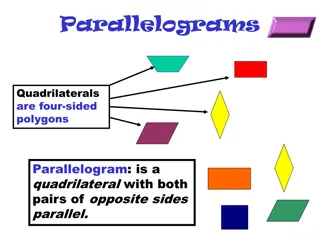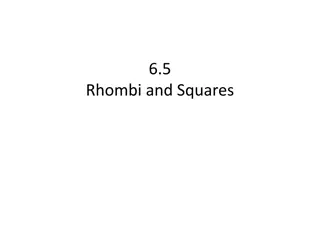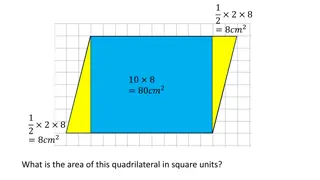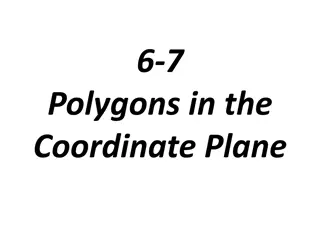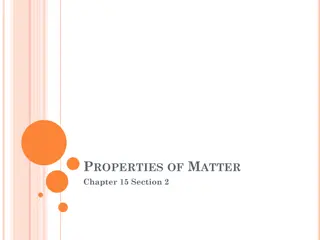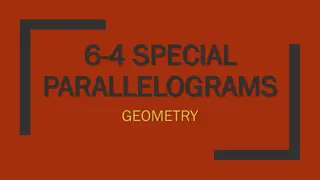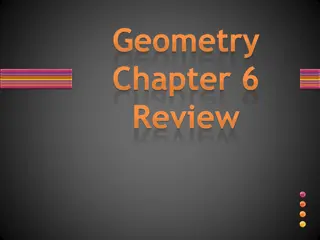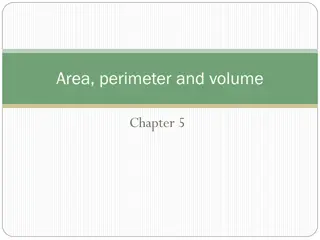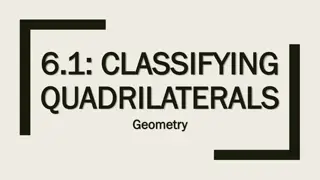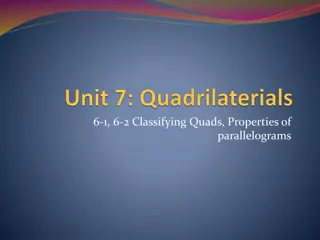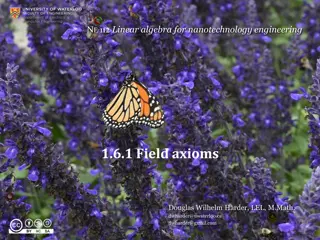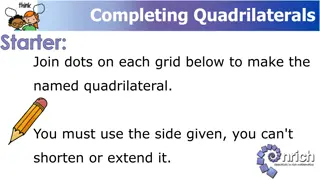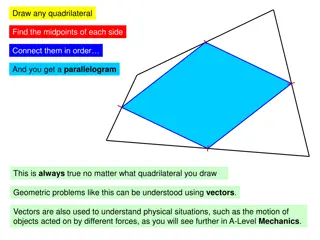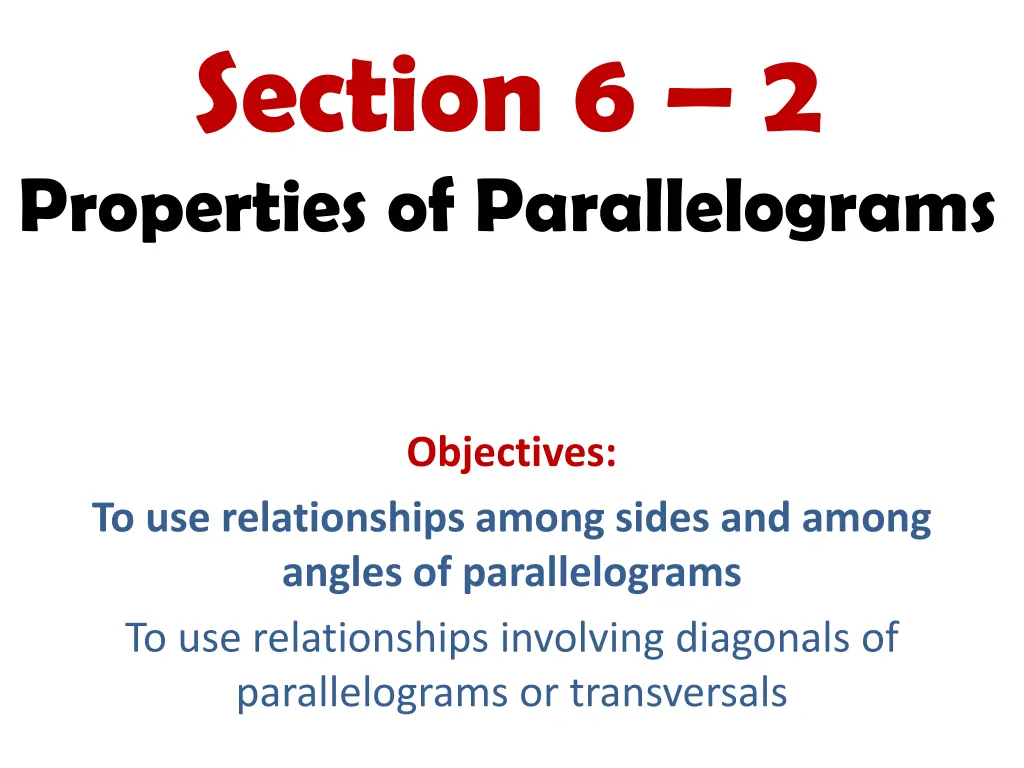
Understanding Properties of Parallelograms
Explore the relationships among sides, angles, diagonals, and transversals of parallelograms through theorems and examples. Discover how opposite sides and angles of a parallelogram are congruent, and solve problems involving consecutive angles and algebraic computations. Practice finding side lengths, angles, and perimeters of parallelograms in various scenarios. Homework assignments included for further practice.
Download Presentation

Please find below an Image/Link to download the presentation.
The content on the website is provided AS IS for your information and personal use only. It may not be sold, licensed, or shared on other websites without obtaining consent from the author. If you encounter any issues during the download, it is possible that the publisher has removed the file from their server.
You are allowed to download the files provided on this website for personal or commercial use, subject to the condition that they are used lawfully. All files are the property of their respective owners.
The content on the website is provided AS IS for your information and personal use only. It may not be sold, licensed, or shared on other websites without obtaining consent from the author.
E N D
Presentation Transcript
Section 6 2 Properties of Parallelograms Objectives: To use relationships among sides and among angles of parallelograms To use relationships involving diagonals of parallelograms or transversals
Theorem 6 1 Opposite sides of a parallelogram are congruent
Consecutive Angles: Angles of a polygon that share a side Consecutive angles are supplementary!
Example 1 Using Consecutive Angles Find m S in RSTW. A) If consecutive angles of a quadrilateral are supplementary, must the quadrilateral be a parallelogram?
B) Use KMOQ to find m 0. C) If m BAD = y and m ADC = 4y 70, find y.
Theorem 6 2 Opposite angles of a parallelogram are congruent
Example 2 Using Algebra Find the values of x in PQRS. Then find QR and PS. A)
B) Find the value of y in EFGH. Then find m E, m G, m F, and m H.
Find the value of d in ABCD. Then C) find m A.
Example 3 Parallelograms & Perimeter A) ABCD. The perimeter is 48 inches. AB is 5 inches less than BC. Find the lengths of all four sides of
B) ABCD. The perimeter is 92 cm. AD is 7 cm more than twice AB. Find the lengths of all four sides of
Homework: Textbook Page297 298; #2 16 even, 39 - 41
Warm Up Solve each system of linear equations. 1) 2x = y + 4 x + 2 = y 2) 2x = y + 3 3x = 2y Find the lengths of all four sides of ABCD. The perimeter is 92 cm. AD is 7 cm more than twice AB. 3)
Section 6 2 Continued Objectives: To use relationships involving diagonals of parallelograms or transversals
Theorem 6 3 The diagonals of a parallelogram bisect each other.
Example 3 Using Algebra Find the values of x and y in ABCD. Then find AE, EC, BE, and ED. A)
B) and XZ. Find the values of a and b. Then find WY
Find the values of x and y in PQRS C) when PT = 2x 7, TR = 3y 9, QT = y 1, and TS = 2y 5.
Theorem 6 4 If three (or more) parallel lines cut off congruent segments on one transversal, then they cut off congruent segments on every transversal.
Homework: Textbook Page 298 300; # 17 22, 24 32 Even, 44 52 Even



